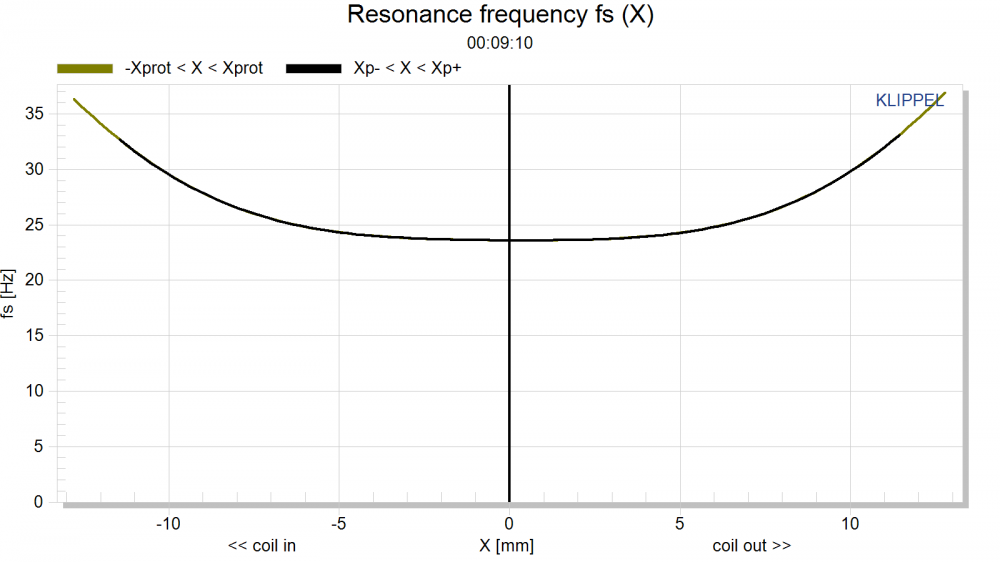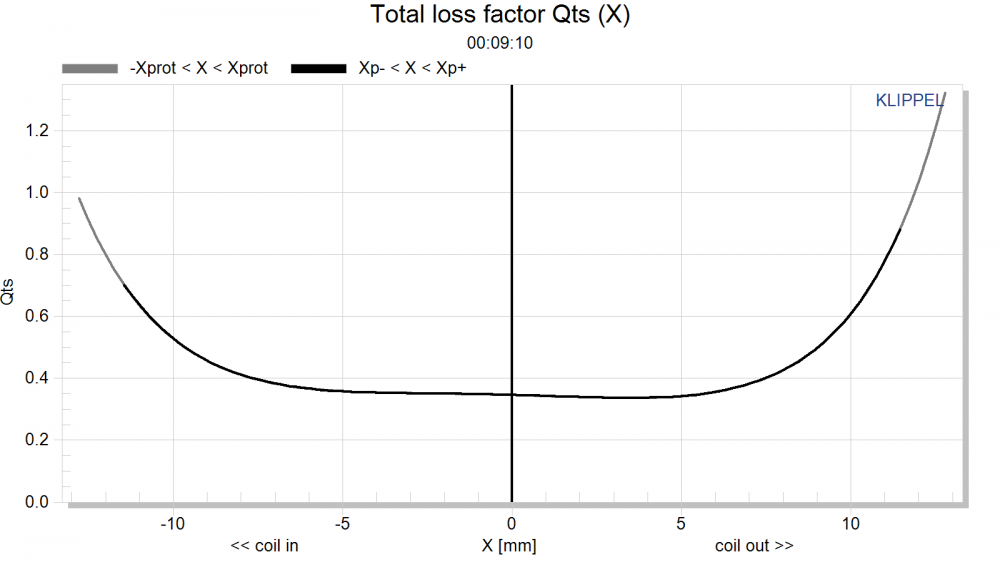Site Links
Howdy, Stranger!
It looks like you're new here. If you want to get involved, click one of these buttons!
Quick Links
Categories
In this Discussion
Who's Online (0)
QMS, anyone?
A couple of years ago on FB, Jeff Bagby (may he rest in bliss) - told me that woofer and mid-woofer with high QMS tend to reproduce micro details. On reflection, this seems intuitive - a loose suspension, controlled by motor force. I think that this is one reason that I really like the RAD drivers - the R176-CP has a QMS of 6.215,
Have you noticed this?
Do you think this is a valid secondary screening spec for a woofer?
But Chahly - Stahkist don't want speakers that look good, Stahkist wants speakers that sound good!
Tagged:

Comments
https://www.diyaudio.com/community/threads/the-significance-of-high-qms.120505/post-6995804
For myself, high Qms just means it doesn’t have an aluminum coil former. I have excellent speakers with and without aluminum formers so it’s hard to make generalizations in favour of either. You will find this statement in Wavecor data sheets however: “ Low-loss suspension (high Qm) for better reproduction of details and dynamics”
One downside of high Qms for a woofer with low crossover like a 3-way, in the large impedance peak results in greater interaction with the low pass inductor, resulting in the frequency response lumps in the bass range.
TBH I believe that is a fairy tale that seems to persist for some reason. Qms is inversely proportional to damping in the suspension parts. Too low of a Qms implies a highly-damped or perhaps over-damped suspension, which some people attribute to an inability to react quickly and reproduce "micro details". IMHO that is not a relevant parameter. Qms is just part of a mathematical way to characterize or describe the behavior of the driver near its resonance frequency (near Fs or Fb) and has nothing to do with what the driver is doing at higher frequencies. The high-frequency extension of the driver's passband (including the crossover) is what limits how fast it can respond to an input. "Up there" the cone is not really moving by any appreciable amount, so the suspension is not really involved. The upper end of a raw (unfiltered) driver's response can be negatively influenced by high Le, and cone breakup will smear out detail.
On some other forums there are people who espouse looking for the highest Qms driver they can find while at the same time choosing way too large of a driver, sometimes a large PA woofer. They get a big floppy cone that smears out any of the vaunted "detail" they are seeking!
I have a hunch that what many people perceive as extra detail is actually distortion. Low order distortion, 2nd and 3rd don't necessarily sound offensive.
I've read a lot of threads on DIYAudio where some loud mouth members are completely wrong. I recall reading one that was about how great a high Qms is...
Hahahaha!
But seriously, high Qms is not "fast" or "detailed" per se. I always wondered if there IS something to that myth but instead of being attibutable to Qms was some other characteristic of such a driver that just happened to come along with a high Qms. Otherwise it could simply be confirmation bias, just like boutique AC mains cables. I hear those REALLY bring out the detail in your system!
Ya know, Jeff used to tout a preference for a higher Qms drivers..... we're all allowed our own opinions.
DIYaudio....
I get tired of the EnaBl pusher over there, saying xovers are evil, that he invented push-push woofers and that it means opposed when it doesn't. Then that other guy that "bates" others into drivelous psychobabble, and yet that 3rd fella that says horns need a mouth full of foam. Etc, etc...
InDIYana Event Website
That 'bater guy sure has a lot of interesting idea for: (insert your high end product name here)-on-the-cheap!
Also have to bring up the famous "sound of one transistor clapping" guy who builds very expensive H2 distortion generators, negative phase H2 only of course.
But hey, I am pissing into the wind here so I will leave it at that.
I don't have golden ears, but the drivers that I have really liked have very low 3rd order, pretty flat FR, and good to great detail. We used to build some Dynaudio systems back in 1981 or so, and my wife remarked that they really didn't sound very good until you cranked up the volume. I didn't have the analytic tools (or theory) back then to figure out why.
I get the arguments on both sides, but when I think of my favorite midwoofers, they are almost exclusively high Qms drivers, and I would collectively describe them as sounding more dynamic, though that description may mean different things to different people. It may be coincidental and what I'm actually hearing is due to some other factor, but I definitely look at Qms when analyzing potential drivers.
I love the Criton 1TD I built, and the LDW7 has QMS = 9.1
They certainly have a huge dynamic capability and very clear.
.
OK, I will offer a counter example. This driver has a Qms of 4.2. I don't think you can say it is not good or will have poor detail, etc...
https://purifi-audio.com/ptt6-5m08-nfa-01/
I wouldn’t ignore the late Jeff Bagby’s observation. There may be something to it. Perhaps it related to an underlying phenomena, like Kms(x) linearity, or multi factorial like Fs shift with excursion or Qts change with excursion. Remember, Jeff was working without a Klippel.
Scan-Speak’s 7” Illuminator 18WU/4741T00 has a Qms (mechanical Q-factor of driver in free air considering Rms only) of 7.2
Erin Hardison measured it and when it comes to the Klippel, just knocks it out of the park
https://www.erinsaudiocorner.com/images/Reviews/Drivers/Scanspeak/18WU4741T-00/Kms Symmetry Range.png
https://www.erinsaudiocorner.com/images/Reviews/Drivers/Scanspeak/18WU4741T-00/Stiffness of suspension Kms (X).png
.png "")
https://www.erinsaudiocorner.com/images/Reviews/Drivers/Scanspeak/18WU4741T-00/Resonance frequency fs (X).png
https://www.erinsaudiocorner.com/images/Reviews/Drivers/Scanspeak/18WU4741T-00/Total loss factor Qts (X).png
Reference:
https://www.erinsaudiocorner.com/driveunits/scanspeak18wu4741t00/